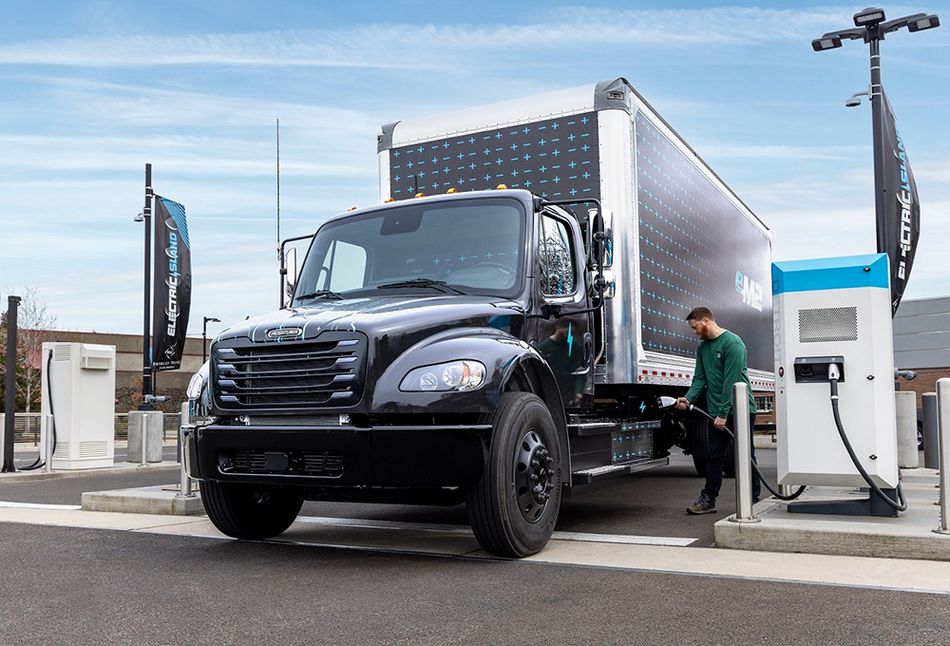Circular economy principles for a sustainable automotive future

The New Holland T7 Methane Power LNG tractor can run on “better-than-zero-carbon” biofuel – liquefied fugitive methane captured and converted from slurry lagoons that hold livestock manure. (CNH Industrial)
How can circular economy principles be applied to the automotive industry?
This article was first published on
www.sae.orgFREE REPORT: Reducing Human Driver Error and Setting Realistic Expectations with Advanced Driver Assistance Systems
Thousands die or are injured each year in automobile crashes. Bringing automated driving systems technologies into the advanced driver assist systems (ADAS) and connected vehicle space will help humans drive more safely and better prepare us for automated vehicles (AVs).
Learn more about ADAS and ADS implementation with the goal of reaching zero deaths and serious injuries by downloading this FREE report from SAE International (valued at $50).
Circular thinking is critical to companies’ sustainability efforts
Sustainability extends beyond just decarbonization. A term popping up more and more in executive and engineering-focused presentations is “circular economy,” referring to a closed-loop production cycle that seeks to minimize resource inputs and reduce or eliminate waste and emissions.
Attendees at the recent SAE COMVEC 2023 heard from Rob Zemenchik, CNH Industrial’s Sr. Manager for Product Sustainability, explaining how the company specifically seeks projects that deliver on circularity in the product lifecycle. CNH Industrial’s roadmap to hit its 2030 and 2050 climate targets includes more than 150 specific projects. One of the “early success stories” is its work with British company Bennaman on an on-farm liquid fugitive biomethane production process.

“Biodigestion is not new, but the cost was always too high. You had physical structures that were very capital intensive,” he said. Bennaman developed a “low-cost” lagoon cover that captures fugitive methane from livestock manure and converts it to automotive-grade CNG and LNG (compressed and liquefied natural gas) that the OEM claims is a “better-than-zero-carbon” biofuel.
Methane has a global warming potential of more than 80 times that of CO2 over a 20-year period, according to the United Nations Economic Commission for Europe (UNECE). “Cows, which are often indicted as culprits in global warming, can now be part of the solution,” Zemenchik asserted. “One of the successes we’ve seen so far [in this project] is that we can now do this with less than a five-year payback in a system that lasts up to 20 years.”

Speakers on the “Smart Engineering for Sustainability” executive roundtable at COMVEC addressed the question posed by SAE Media about how their companies prioritize their technology portfolios and decide which projects to pursue. “We will touch everything from powertrains to hydraulics,” Zemenchik said. “It’s incremental – it’s a percent here, two percent there. To decarbonize a fleet, we have to do the deep dive into all of those products.” He added that being open to collaborative operations with “interesting, non-traditional players” can help with gains, instead of relying solely on in-house R&D.
Engineers need to be economists and perform what-if scenarios for strategic planning, according to Tim Frazier, VP of Research and Technology at Cummins Inc. “As economists you have to start thinking about what are the minimum set of building blocks that we need to assemble resilient solutions for our customer base. It doesn’t mean we’re going to take them all into production, but we’re building technology capability [for when] the future becomes more clear.”
Rakesh Aneja, head of eMobility for Daimler Truck North America (DTNA), replied: “The engineer in me wants to do everything. The reality is that [we have] finite resources, both financial and even more importantly, people.” Regulations and customer demand are two factors to consider, as is balancing between near- and long-term solutions. Hydrogen technology – both fuel cells and combustion engines – will play a complementary role, he said, but in the U.S. is at least a “couple years” behind the battery-electric ecosystem.
A “trifecta” of conditions is required for successful decarbonization, Aneja said: viable product solutions, total cost of ownership (TCO) parity, which is “not where it needs to be” but is improving, and dependable charging/refueling infrastructure, which is lagging. “We have several battery-electric vehicles in production today. The initial acquisition price of those vehicles is two to three times the cost of a comparable diesel vehicle,” he said, noting that localization and industrialization of battery production will help bring costs down.
Don Hillebrand, division director at Argonne National Laboratory, referenced a recent meeting he attended in which several people from both the utility and OEM sides said that the infrastructure is at least five years behind where electric vehicles are. “And that’s probably a true statement,” he said. “It’s building up very quickly, but infrastructure [still] moves slower than the needs of our vehicle fleets.”
Aneja agreed, saying that some of the best-case scenarios for infrastructure installation are 18-24 months. “In many cases, infrastructure timelines are much longer – two or three years, even longer,” he said. “That continues to be a challenge, and a lot needs to be done from a proactive perspective to meet our emissions goals.”
But why wait? posited Cummins’ Frazier. “Rather than waiting for a few specific answers to be right in the future against all the limitations and infrastructure challenges that are up against them, [we could] employ a broader matrix of solutions to go further, faster,” he said. “If we leverage low-carbon fuels, liquid fuels, hydrogen and renewable grids, we can take about 1.4 gigatons of CO2 out of the environment, ahead of waiting for [widespread] grid infrastructure. That’s the equivalent of taking every truck off the street for three years. Not a bad goal.”
